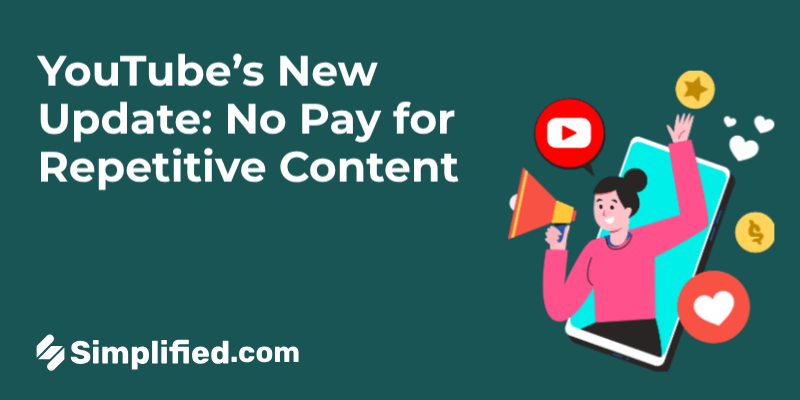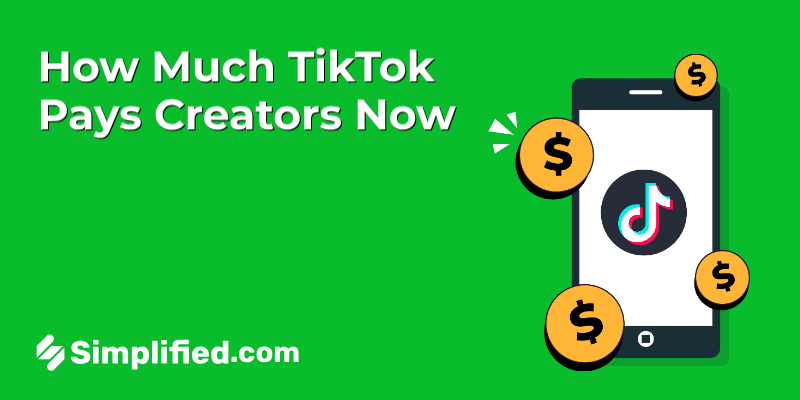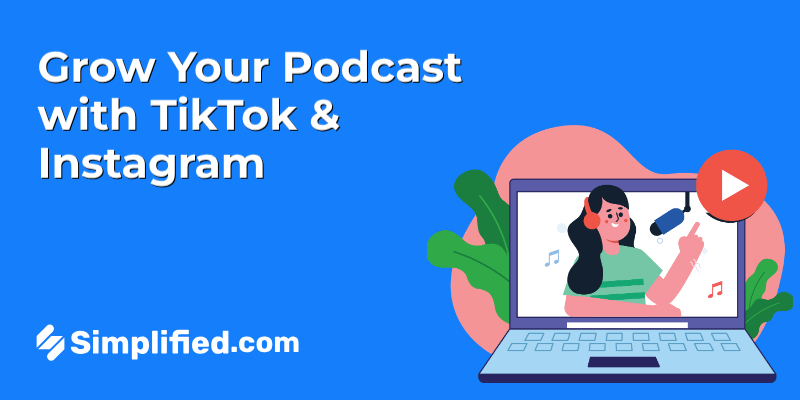
Today, social media is our everyday journal. People share everything with their followers, from morning coffee runs and shopping sprees to evening workouts and weekend parties. This strongly opinionated crowd doesn’t hesitate to speak their mind on Twitter either.
In short, it is the goldmine of audience opinions, likes, and dislikes — and social listening can tap into those and take your brand from meh to wow. You can:
- Assess customers’ response to your product and services
- Understand what they need and expect from your brand
- Analyze how their preferences and challenges evolve over time
- Keep track of customer complaints, suggestions, and feature requests
These insights let you gauge what your customers need and guide your business strategy. Most importantly, they show how you can improve CX and become a customer-centric brand.
Wondering how to do it? Let’s find out.
11 ways to boost customer experience through strategic social listening
Reports show that 61% of businesses have adopted a social listening system. If you aren’t one of them, you miss out on valuable opportunities to enhance CX and improve retention and loyalty.
Wondering how to use strategic social listening to ace your CX game? Here’s how:
Identify trends
Today social media is run by trends. They are the direct representation of what your customers like and engage with. Joining the right trending bandwagon to optimize your strategy will let you leverage their appeal and enhance customer experience.
While trends play a major part in molding customer preferences, they come and go in the blink of an eye. With social media listening, you can monitor them constantly and jump in while they are still relevant.
Invest in a reliable social media monitoring tool to track trending topics and hashtags. You can set up specific keywords so that the system detects the most relevant ones for you. Participate in these conversations to build closer customer relationships and improve customer experience.
Content plays a key role in CX. It offers value and gives your audience a reason to engage with you. You can use the relevant trends and give them your spin to elevate content marketing.

Source: Instagram
In September 2022, social media went fanatic with actor Jeremy Allen White and his assertive chef character in The Bear. Wendy’s joined the buzz with their take on the meme. It worked because the meme follows Wendy’s quirky brand voice while putting the fan-favorite half-and-half frosty in the center.
Such relevant trendjacking instances on Wendy’s feed entertain the customers, improving their CX while maintaining brand individuality.
Monitoring trends also lets you discover how your audience’s preferences are evolving. You can track changes in target demographics, refine customer segmentation, and tailor experiences accordingly with such insights.
Address customer concerns
One crucial part of offering a stellar CX is to be there to address customer queries promptly.
Today, before contacting customer services, buyers take to social media to ask brands questions. However, manually tracking customer concerns on social media is difficult for scaling businesses. You may even miss out on urgent queries, compromising customer experience.
Social listening tools monitor every relevant online conversation and uncover customer complaints you may miss otherwise. These tools send instant notifications when your brand name is mentioned, letting you address questions and concerns quickly. You can offer the best possible solution on the conversation thread or provide them with a channel to contact for further assistance.
Such effort lets your consumers enjoy your product in the best possible way, enhancing customer experience. It shows they can rely on your social media handles without scrambling for assistance.
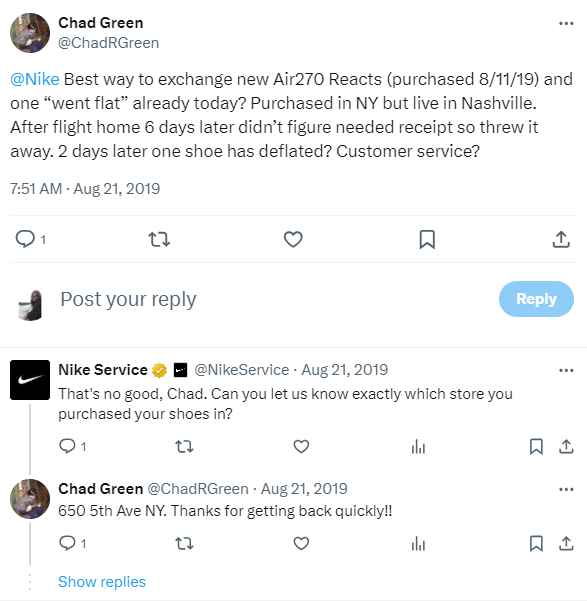
Source: Velocity
For example, Nike diligently monitors social media and promptly addresses customer complaints. As you can see in the above post, Nike’s quick reply impressed the user, too.
Engage with customers
Besides responding to complaints, you must also engage in social media conversation to maintain your relevancy and strengthen your connection with customers on a personal level.
The trick is to choose the conversations your target audience participates in. Use your social listening tool to identify and join these discussions in real-time.
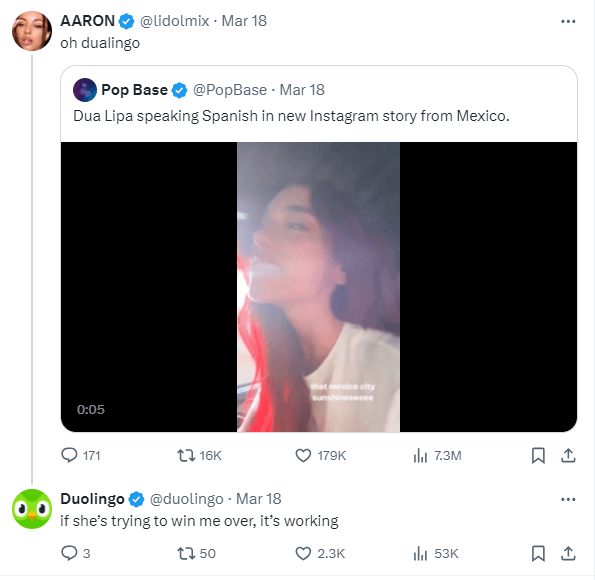
Source: Twitter
Duolingo’s endearingly odd brand personality is an inseparable aspect of its customer experience, and the brand uses it on social media to elevate CX further.
For example, Duolingo frequently engages with its audience by using Duo’s highly popular crush on Dua Lipa. A user shared a tweet video of the singer attempting to speak Spanish, and the brand replied with its signature odd humor.
- Gather insights
To improve customer experience, you must pinpoint exactly where you are going wrong. And what could be a better way than examining it from your audience’s perspective?
Use social listening to assess customer conversations and understand their experience with your products and services. Track relevant topics your customers are participating in. Monitor customer frustrations and apply them to improve their journey.
Additionally, building the right omnichannel strategy is crucial to ensure a seamless and consistent customer experience across all touchpoints, fostering loyalty and satisfaction. Such steps will keep your CX aligned with the current customer needs.
Track social media metrics like likes, comments, impressions, fan reactions, user engagement, and video plays. Gather industry and competitor data, create benchmarks, and compare them with your numbers. Identify areas of improvement and apply what you have learned to eliminate what’s not resonating with your target audience.
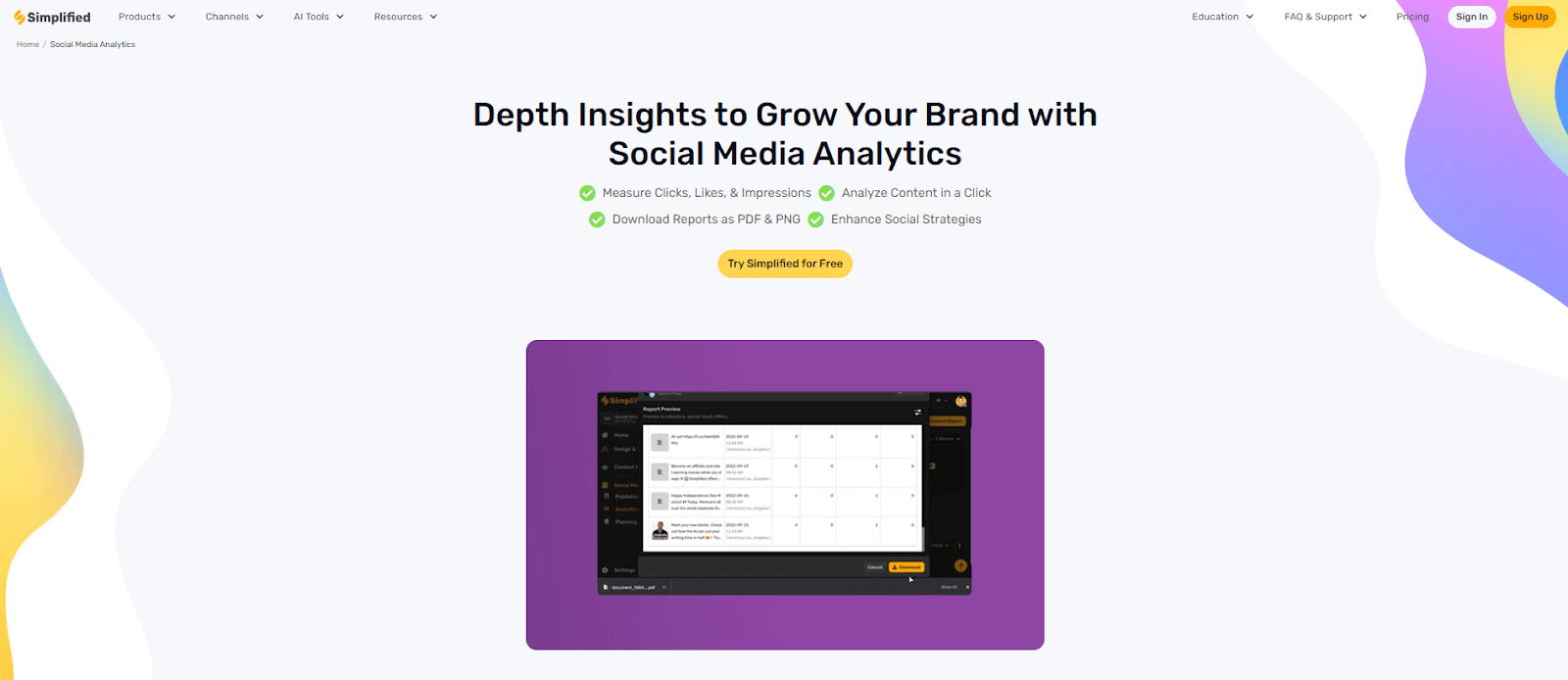
Source: Simplified
But to do all that, you need a reliable social listening tool with accurate analytics and reporting — and that’s what Simplified offers. Here, you can run social listening, download insightful reports, and share them with stakeholders. It’s the ultimate social media tool you need to keep your CX aligned, no matter how fast customer preferences change.
- Personalize interactions
Personalization plays a major role in optimizing CX. Reports show that personalized experiences can turn 56% of buyers into repeat customers, an increase of 7% year over year.
However, getting accurate personalization data is increasingly challenging for 50% of companies.
You can solve this by listening to regular social media. Analyze customers’ feelings about their experience and craft a journey that prioritizes their preferences.
You can analyze conversations and identify positive and negative sentiments. Then, tailor CX to address those specific issues. Social listening can identify customer pain points and needs and help you customize an experience that caters to them.
Let’s say you run an e-commerce business. Use social listening to understand customers’ needs and customize product recommendations accordingly, offering them a satisfying shopping experience.
Social listening also lets you identify recurring requests you can use to personalize the experience further.
Monitor competitors
Monitor your competitors’ social media presence and audience perception to assess your position. Assess their engagement metrics and create benchmarks to evaluate your performance and detect areas for improvement.
Social monitoring can also uncover gaps in your competitor’s CX. You can understand customer grievances against competitors and eliminate those issues from your CX. Focus on the common complaints, appreciations, and suggestions and use them in product development, marketing, and customer service.
Provide proactive support
Set up triggers in your social media monitoring tool to be notified whenever someone talks about your brand, product, or industry. Identify queries, complaints, and service requests and respond promptly. Avoid being defensive. Use sentiment analysis to understand their frustration and offer resolution accordingly.
Not every customer will mention your brand when talking about your services. Without social listening, you could miss these opportunities to improve CX.
Collect feedback
Customer feedback is your most valuable asset for boosting CX. However, the overwhelming noise on social media complicates unearthing the important ones.
With social listening, you won’t miss precious suggestions from your customers. All you have to do is set relevant keywords, hashtags, and search queries to identify brand—and industry-related conversations.
Look for patterns in the feedback to understand which areas of your CX are causing frequent problems. Look for suggestions and inputs and try to implement them proactively.
Build brand advocacy
Use social listening to track relevant forums and groups and engage with the members authentically. Identify customers who leave positive feedback or actively recommend your products to peers. These individuals can be valuable brand advocates.
You can offer them exclusive discounts, early access to new products, or special promotions. Acknowledging their support will improve their experience and strengthen their loyalty.
Create relevant content
Monotonous refurbished content bores customers and hampers their experience substantially. So, how do you maintain a constant flow of ideas to drive desired engagement?
Use social listening to identify the most “hip and happening” topics. Then, create content around them.
Review the data collected by your social listening tool regularly. Find patterns, trends, and recurring conversation topics. You can also draw inspiration from competitors and promote those topics. Audit your existing content and find gaps. Then, use social media insights to see how to use these trending topics to address unanswered questions.
Enhance product development
Social listening tracks changing customer needs, and its insights can help you enhance product development to maintain relevance. You get feedback from customers in real time and monitor discussions about your competitors’ products. Analyzing these data offers valuable insights into what customers want from your product, letting you make informed decisions about product improvement.
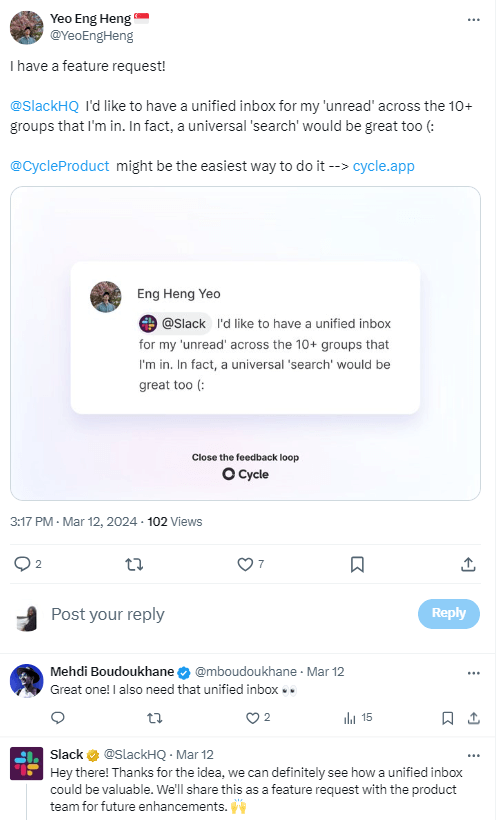
Source: Twitter
For example, Slack noticed the above feature request and shared it with their product development team for consideration.
Conclusion
Here is a TL;DR version of how to improve CX with social listening insights:
- Identify relevant trends
- Monitor customer concerns, complaints, and requests and respond promptly
- Regularly engage with customers and create a community of brand advocates
- Personalize interactions based on social media insights
- Learn from competitors
- Refine content and enhance product development
There is no denying that social media impacts how businesses run today. With strategic social listening, you can harness this influence to improve your customer experience, satisfaction, and loyalty.



